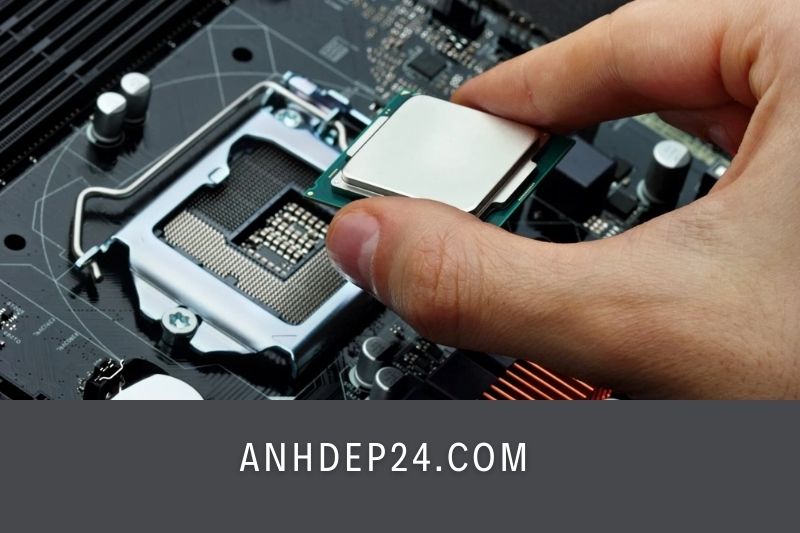What Does CPU Stand For? Central Processing Unit (CPU) is a computer hardware component that executes software instructions.
CPUs’ form, function, and performance have changed dramatically since the first commercially available CPUs in the early 1970s. Modern CPUs are microprocessors, which are contained on a single integrated circuit (IC).
What Does CPU Stand For? And Where Do You Find It In A Computer?

CPU stands for Central Processing Unit. It’s also called a microprocessor or processor.
It is one of the most critical pieces of hardware in any digital computing environment, if not the best.
There are thousands upon thousands of tiny transistors within a CPU, which are switches that regulate the flow of electricity in the integrated circuits.
The CPU is located on the motherboard of a computer.
The motherboard of a computer is the main circuit board within the computer. It connects all the hardware components.
A CPU, also known as the brain and heart of all digital systems, is responsible for all work. It executes all programs and performs every action that a computer can do.
What Are Computer Programs And Where Are They Stored?
Every CPU can run a program.
A program allows you to use your web browser as a word processor. One program can perform mathematical operations with a calculator or allow you to type letters and characters using a keyboard. Some programs allow you to click and select elements using a computer mouse or by pressing down on the touchpad of your laptop’s keyboard.
No matter what your computer activity may be, there’s a program that can handle it.
Programs are instructions that must be followed step-by-step in sequential and logical order.
These are written in a human-readable format – a programming language by a programmer.
Computers can’t understand programming languages, so they must be translated into a more easily understood format.
This form is known as machine language or binary.
Binary is a base-two numerical system. It consists of two numbers: 0 & 1.
This mirrors and ties in nicely with the two states that transistors can control the flow and ebb of electricity: they can either be on (1) or off(0).
Programs are stored under the hood as sequences orbit. Bits can be described as binary digits, sequences of 1s or 0s.
Programs can be stored indefinitely and for a long time in a storage device.
These types of memory are non-volatile, storing data even if the power is out.
All data in a running program is stored in its main memory, RAM (Random Access Memory), while it is being used.
This type of memory can be volatile, and data is lost if the power is cut.
What Does A CPU Do?

A CPU, in a nutshell, is responsible for processing logical and mathematical operations as well as executing instructions.
It can execute millions upon millions of instructions per second but can only perform one task at a given time.
The first input it receives is from an input device, such as a monitor screen, keyboard or mouse, or an application/system program (like your web browser)
The CPU then takes care of four tasks.
- It retrieves instructions from memory to learning how to handle input data and the corresponding instructions. It searches for the address of the appropriate instruction and forwards the request to the RAM. Both the CPU and RAM work in unison. This is also known as reading from memory.
- Translating or decoding the instructions into a format that the CPU can understand is called machine language (binary).
- Execute and follow the instructions.
- The execution result can be stored in memory and retrieved if needed. This is also known as writing to memory.
Some relevant articles:
- GT 1030 Vs RX 550: Top Full Comparison 2022
- 1660 Super Vs 3060: Top Full Guide 2022
- 6900 XT Vs 3080 TI 2022: Which Best Should You Buy?
Terms That Is Easy To Confuse With
Chipset
A chipset refers to a group of electronic components within an integrated circuit known as a “dataflow management system.” It manages data flow between the processor (CPU), the memory, and peripherals. This is typically found on the motherboard.
CPU Socket
A CPU socket (or CPU slot) contains one or more mechanical parts that provide electrical and mechanical connections between the microprocessor of a motherboard and a printed circuit board (PCB). This allows you to replace or place the CPU on the motherboard without having to solder it. There are many types of CPU sockets: AM3+, Am4, Socket F, and FM2+.
Conclusion
There is no denying that the Central Processing Unit, or CPU, is one of the most important pieces of hardware in a computer. However, some people may be wondering if the benefits of having a CPU are worth the cost. This article will look at the pros and cons of having a CPU and see if it is worth the investment.
